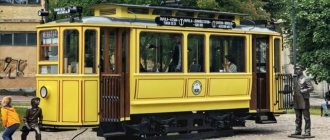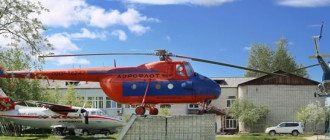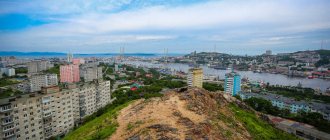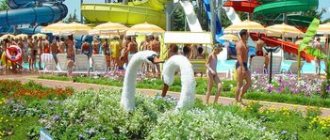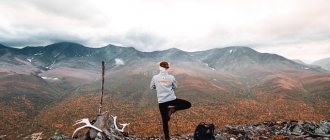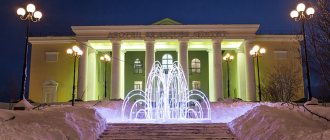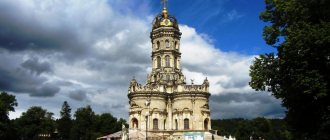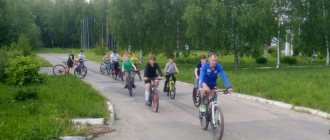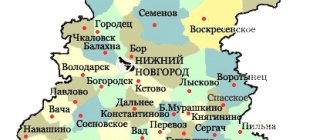Shipwrecks in the bay near Russky Island Vladivostok was founded only 161 years ago, that is, younger than even modern Australia.
He could not have appeared a little earlier: there was no suitable geopolitics. If he had appeared a little later, there would have been China or Japan. And so at some point we really needed trade with the East and protection of the region. They chose the main city on the Pacific Ocean, there were options from Petropavlovsk, Khabarovsk, Nikolaevsk-on-Amur, but it was Vladivostok that was chosen as a naval base: the configuration of the islands and peninsula was perfect for building a layered defense, and the bay almost did not freeze in winter. And when a military base of such a scale and trade appear, a lot of supplies and materials need to be transported there, and goods back. This is how the Trans-Siberian Railway appeared, which connected half the world into a logistics chain. Such construction requires serious resources, and at the same time they really wanted to develop the region. Another magical thing happened: the Porto Franco regime was declared. That is, duty-free trade. In the case of a new city, this actually means that the city was immediately made into a kind of open source community. It was possible to start any project for the city from scratch - and personal financial success meant benefits for the city. The economy was placed in the hands of the community.
The next feature is related to the plumbing. There were no normal sources of water in the city. As a result of a bunch of factors, they decided to deliver water not by a traditional bus, but by microtransactions. But there were no drones then, and cheap labor was needed, which, in fact, would become the city’s infrastructure systems. Vladivostok was opened to migrants from nearby countries: China, Korea and Japan. This gave the city a quick start and added resources for entrepreneurship.
As a result, we have explosive economic growth, trade with half the world through an extremely successful transport hub and a rather special mentality of the inhabitants. Welcome to Friday urbanism - and to Vladivostok.
See cable-stayed bridges
There are three new bridges in Vladivostok that everyone should see. All of them were built during preparation for the APEC summit, which took place in Vladivostok in 2012. And if one of them, the low-water bridge across the Amur Bay , can be “slipped” without noticing on the way from the airport (although it is one of the longest bridges in Russia - its length is 4364 meters), then it is impossible not to pay attention to the other two .
Both of them are cable-stayed and are located in the city center. The Golden Bridge is a cable-stayed bridge across the Golden Horn Bay north of the Eastern Bosphorus. Here, of course, it is important not to confuse Vladivostok with Istanbul, although the similarity is amazing - in names, bridge designs, and even water areas. Driving across the bridge, you can see two ports in the Golden Horn Bay, commercial and fishing, as well as ship repair enterprises.
And another bridge - Russky , so grandiose that its image was even placed on the new 2000 ruble banknote. It has the world's largest span among cable-stayed bridges - 1104 meters. The Russian Bridge connects Eastern Vladivostok across the Bosphorus Strait with Russky Island, which in Soviet times was a closed military facility where military units were located. With the advent of the bridge, everything changed - on an island with an area of 97 km2, the campus of the Far Eastern Federal University and the Primorsky Oceanarium, similar to a huge flying saucer, were built.
Vladivostok 2000, finally, you can hold in your hands
Foreign influence
Vladivostok is close to Korea, Japan and China. You probably know about Japan and used cars from there. In general, the Japanese buy a car, drive it for about 70-90 thousand kilometers, and then sell this junk. Residents of Vladivostok buy these beautiful new cars and sell them further across the country.
In the city, a left-hand drive car is called “with an atypical steering wheel position.”
Vladivostok, in fact, was a city that was very much Soviet... There is a fishing fleet, a merchant fleet, factories that make everything from watches to ships. Not only Vladivostok, but also the cities closest to it, the agglomeration. All of this [the collapse of the USSR] had a very strong effect on the city, because practically not a single plant went up. Almost no plant continued to exist as it was. They sank very quickly. Vladivostok lived exclusively by the sea for a very long time. Moreover, since we didn’t build ships, we didn’t even repair them, in fact... At the same time, the whole city lived thanks to cars. Cars were brought, cars were sold, cars were repaired, cars were transported to other cities to order. A huge market, which now, of course, has nothing in common with its past appearance. Now these are just websites, these are online sales. Then this is a completely huge part of the city, which completely razed one of the Green Corner forts to the ground... Everyone in the city depended on the automobile business in one way or another. Olga Ermoshina
To simplify, the story is this.
At first, the cars went to sailors. It was possible to bring a car in the hold once a year. Naturally, it was bought there and then sold in Russia. When it became clear how profitable this was, some received a sailor’s passport just for the sake of such a voyage: according to the documents it was a crew member, in fact it was cargo. Then for some time they transported the cars separately from the engines for subsequent modification. When the issue with spare parts was closed, they began to cut cars and weld them in Vladivostok: from the point of view of customs, the cut was scrap metal, and from the point of view of the happy new owner, it was sometimes a death trap. The first transporters were so loaded with them that an accidental storm could drown the parking lot. In general, they are constantly coming up with some kind of schemes aimed at tripartite: to mislead the state, the Japanese (these are recent technologies) and, of course, the final buyer. To properly buy a car in Vladivostok, you need to be qualified as a car mechanic - because you will come across, if not an ichthyander, then at least a twister. Other contraband and consumer goods were traditionally carried along with the cars. Smuggling even now, no, no, can be found in the same market (more precisely, the origin of goods in a number of stores cannot be verified). And among consumer goods, the most familiar to you is anime. More precisely, the first culture shock was caused by those types of anime that now anger RKN-chan. But regular anime on cassettes also spread across the country from Vladivostok. Now, by the way, there are stable geek communities in the city, and geeky people are a fairly common occurrence. There are a lot of cosplayers and they are quite well organized.
China is connected to the city by a huge number of migrant workers. It was these people who brought to Vladivostok what the sailors spent their money on: gambling (which, after the debtor’s credit was exhausted, ended with a game “for meat,” that is, for a finger or a piece of the belly), other leisure houses - and a bunch of Chinese goods. Now in the center of the city there is the Millionka quarter with the entourage of the departed Chinese, and the point of concentration of the current ones is the market on Sportivnaya, which is becoming civilized every year, but shouts in the spirit of “Come over, you bastard, you’ve got crummy cowards!” can still be heard from all sides. It’s really cool there, especially considering the naming of Chinese cuisine establishments in the spirit of “Dobrynya and Anya,” because the Chinese take the names of the country where they come.
Traces of Korean culture can also be seen. Milkis and pyanse are a must-try in the city. You can also drink Doshirak coffee and eat some doshirak.
There are many foreigners in FEFU. There are only 20 thousand students, of which 3.5 thousand are foreign. That is, this is the majority of the population of Russky Island.
FEFU main building
The island itself, by the way, was a wild land, where there were almost no roads and cars with license plates until the construction of the epic bridge to the epic summit. Then a new university was built there, and it became an island of students, military personnel and only then local residents. Our training is in Russian, so many students from Asia first learn the language for a year, and only then take the main disciplines:
The most popular specialties among them are, first of all, medicine and physics. Students from India go to study nuclear physics, as well as the physics of nanomaterials. International, managerial, economic, and humanitarian programs and areas are very popular in China. Students from Central Asia and Europe, the USA and Great Britain come to us to study medicine. Alexander Krestov
Just in case, let me remind you, using the example of the PCR laboratory of the Far Eastern Federal University, that the meaning is this: having once trained a group of doctors to work with our protocols, on our equipment and with our test systems, we receive a powerful lobby for purchasing all this from us, accordingly. Therefore, foreign students are marketing domestic production, and not a business about training.
Cubesat students
And a lot of tourists come for all this. To the Japanese, a tour to Vladivostok is sold as “Europe in two hours,” because the city center is largely German in architecture. Koreans simply get to know the mysterious Russian soul, but only through crowd guides. I mean, one couple went, posted the route, restaurants visited and shops with specific goods purchased - and now everyone is doing something like this, because data for the official guide was also taken from their route. Especially for Korean girls, they made apartments for Booking and AirBnB in bears and pink tones, and for boys - in the style of victorious communism with old furniture and portraits of Ilyich. Now all this has already disappeared from the market due to the pandemic.
Why is the center German? Because the Germans and Americans opened their own trading companies. The first supermarket in Rus' was created by Kunst and Albers. They simply brought goods to the city, sold them from a specially built building opposite the office - and bought furs and other goods for export in the city to bring back. The first travel blogger, Eleanor Lord Prey, also worked for them, and she wrote an incredible number of absolutely beautiful letters about the city with all the details. The book was published in a small edition by a local publishing house, and it took off. I highly recommend it, the features of everyday life are interesting.
Well, a lot about interaction with foreigners can be found in Arsenyev, in particular in Dersu Uzala. This book can be read both as a fairy tale and as the diaries of an explorer of the region: it has a very dramatic plot and a very dense presentation.
Well, the largest number of foreign tourists remained. The Chinese move around the city in miniature groups of 50-60 people, buying tons of condensed milk and bird's milk (here it is made using agar-agar, and the factory does not have the right to this name, but it is precisely bird's milk). For them, there is a completely strange thing here - the sea cucumber museum. Actually, there is a small museum and a lot of trading floor with all sorts of cranberries such as healing bear claws and other things. This is such a symmetrical response to Chinese production tours, when the tour takes 30% of the time, and 70% in the store. By the way, if previously our population went to Suifenhe to buy clothes, eat and get their teeth treated, because it was cheap, now with the fall of the ruble the Chinese are coming to us. It started with jewelry stores that quickly made signs in Chinese. Then sweet shops joined. Then the original Chinese stores came to sell Asian goods, because this is the best place to buy something, right?
Separately, it must be said about Suifenhe that it was there that in December 2013, by decision of the State Council of the People's Republic of China, the ruble (together with the yuan) began to be officially used. And the second thing is a whole business for duty-free transportation of goods across the border: weekend tours were offered with 5 kilograms of luggage at the expense of “importers.” “Importers,” accordingly, gave you luggage to carry across the border: 30 pairs of jeans for personal use by relatives, a pack of bras, and so on. As a result, people even went to Sunka to get their hair cut because it was cheaper.
Take a walk along Svetlanskaya Street
The main street of Vladivostok is Svetlanskaya , named after the frigate Svetlana, on which Grand Duke Alexei Alexandrovich arrived in the city in 1873. It's funny that before this the street was called American. Local residents say that it looks like Nevsky Prospekt - perhaps this is due to the fact that architects were invited mainly from St. Petersburg to build Vladivostok at the end of the 19th century.
Svetlanskaya Street is located parallel to the Golden Horn Bay, and there are many city attractions: the monument to the Fighters for Soviet Power on the square of the same name, the Vladivostok Circus, the buildings of the Kunst and Albers trading house, the house of the first civilian resident of Vladivostok, the merchant Yakov Semenov, the monument to the famous American Eleanor Prey, thanks to whose letters there are unique photographs and descriptions of the life of townspeople of the early 20th century, a monument to Vladimir Vysotsky, the Versailles Hotel, where the city's first restaurant called the Golden Horn was located, the Museum of the History of the Far East named after V.K. Arsenyeva and others. You can get great pleasure from the promenade.
View of Svetlanskaya street
Reviews, tips and tourist routes
In three days in Vladivostok, guests have time to get acquainted with most of the city's calling cards, explore the sights of the surrounding area and even visit other cities of the Primorsky Territory. A three-day trip often becomes a continuation of a larger trip to eastern Russia and complements a visit to Kamchatka, Sakhalin or the Khabarovsk Territory, since some airlines connect their flights in Vladivostok.
The following reviews from tourists will introduce 3-4-day routes around Vladivostok:
- “Mists, hills, campus, ships and lighthouses on the edge of the earth” from Anna Porotnikova;
- “Road trip through the Far East, part 1 - Primorsky Territory” from Dmitry;
- “The land where the wind bends the pillars - Vladivostok” part 1 and part 2 from Natalia Konnova.
Be sure to check out the main city page , where you will find useful information about transport, weather, hotels, and advice on what to bring from Vladivostok .
All tourist reviews about Vladivostok on Tourist. RU
Enter the GUM courtyard
Vladivostok was founded as a military post in 1860, and received city status only twenty years later. All these years, the port was actively developing, a little later the construction of the Trans-Siberian Railway began, so entrepreneurs from Europe flocked to Vladivostok.
Among the first to appear in Vladivostok were Gustav Kunst and Gustav Albers , who in 1864 opened the main division of their company here and invited a German architect, who rebuilt a complex of red brick buildings in the neo-Baroque style. In 1884, the first European, incredibly luxurious department store was inaugurated in Vladivostok, where you could purchase a variety of goods from Europe and Asia.
During the Soviet years, the trading house was renamed GUM, and now its restored courtyard houses shops, cafes and restaurants. For example, gastrobistro Gusto, known for its trendy breakfasts and wine dinners, or eclair “Flash” with elegant desserts and good coffee.
Scheme of the old GUM courtyard
Who founded Vladivostok? History of Vladivostok
History of Vladivostok, year of foundation of the city, attractions, hotels, entertainment, reviews of city guests.
The city of Vladivostok is the largest in the Primorsky Territory and in the entire Far East of Russia. It is not only the largest port on the Pacific coast of Russia, but also a developed center of industry, science, culture, and transport.
Vladivostok was founded in 1860, on July 2. It received city status almost 20 years later. Previously, the territory of modern Vladivostok was part of the Bohai state (698-926). Since the 10th century, Vladivostok belonged to the Khitans, and later to the Jurchens. From the beginning of the 13th century, several Jurchen states of Eastern Xia were already located on the territory of Primorye, but after the Tatar-Mongol invasion they were all destroyed. Later, the territory became completely deserted and was practically not mentioned until the 19th century.
During the time of Tsarist Russia, the territory of today's Primorsky Territory belonged to China. After the signing of the treaty in 1858, it became the property of Russia.
Vladivostok, located on the coast of Peter the Great Bay, became known to Europe only in 1852, when whalers accidentally wintered in one of the city’s bays. In 1856, the Golden Horn Bay was visited by the British. In 1859, Governor General N.N. Muravyov-Amursky paid special attention to this bay. On his recommendation, she was named as well. Later, the military post on the shores of the bay was named Vladivostok.
On July 2, the post received the official name Vladivostok. This is confirmed by the entry in the Manchu watch log. The soldiers and sailors began building the post. This day is the official date of the founding of Vladivostok.
A month after the first exit to the shores of the Golden Horn Bay, the corvette "Griden" arrived, whose task was to guard the Vladivostok post and provide it with supplies.
Only in September 1991, Boris Yeltsin signed a decree, after which the city became open.
After the collapse of the USSR, big changes took place: small joint-stock companies and mixed companies increased the scope of their activities and began to cooperate with foreign companies. The transport system began to actively develop, and work with coastal fishing enterprises decreased. The standard of living has decreased – this also affected the city’s economy.
However, with the beginning of the new millennium, the situation in the sphere of economics and social policy changes.
But Vladivostok retains its status as an important trade and financial center, transport and industrial, this creates the preconditions for the long-term development and growth of the city.
According to estimates at the beginning of 2009, the population of the Vladivostok urban district included 605 thousand. The main part (96%) is the population of the city of Vladivostok itself. It follows that the city's population is about 580,990 inhabitants. The population of Vladivostok begins to gradually decrease, but the decline is almost completely compensated by immigration.
Eat crab at Zuma restaurant
A large-scale gastronomic acquaintance with Vladivostok should begin with the Zuma , famous for its crabs and scallops not only throughout Russia, but also in Asia. This is where tourists from Japan, China, South Korea and other countries come to eat plenty of fresh seafood and fish: crabs, scallops, oysters, sea urchins, mussels, tuna, salmon, etc. Even the rolls here are not simple, but golden: no rice at all, but with crab, tuna, salmon, red caviar and a leaf of gold leaf. The presentation of the dishes is no less spectacular - seafood is shrouded in clouds of dry ice, wagyu on pine needles is seared with a torch and sprinkled with gold seasoning, and blue-skinned Pacific halibut is hidden under thin slices of pear.
Over 11 years of work, chef Egor Anisimov and manager Maria Inozemtseva have created a strong restaurant project, which many call the “gastronomic showcase of Russia” in Asia. And if earlier it was difficult to get here due to the rush of Asian guests, now tourists from all over Russia rush to Vladivostok to taste delicious Kamchatka crab at Zuma. For several years now, the restaurant has been the organizer and headliner of the “Hold the Crab” and “On the Crest” festivals, during which restaurants in many Russian cities present chefs’ signature dishes made from Far Eastern seafood.
Seafood Plateau
Latitude Crimean, longitude Kolyma
Primorsky Krai is somewhat isolated in terms of flora and fauna; there are quite a lot of endemics here.
This “lost world” was created because of the Sikhote-Alin, a barrier ridge that blocked the path of the glacier. Therefore, there was no last sharp climatic jump, and not everything had time to die out. Nowadays nature is a mixture of the southern and northern set of plants and animals. Add to this a heat accumulator in the form of an ocean, the virtual absence of large rivers, a cold current nearby and you get Vladivostok. Winter here is not harsh, crispy snow is rather a rarity, but this is not the -40 that is in windless Siberia, but the -15 that feels like an icy hell due to the wind. Well, if anything, the freezing rains have not been canceled either. The latter blocked the road to Russky Island while the ice was being knocked off the bridge cables. The military quickly organized supplies of food to stores and a crossing for doctors, but this is not at all the same as the bridge or the old ferries that came before it. And so usually only glazed cars. Despite the number of cars in the city (540 cars per 1000 inhabitants in 2022), there is no smell of gasoline, because a strong wind simply blows it all out to sea. In exchange, however, the city gets typhoons and tsunamis.
This is on Cape Tobizin in Russian
So come see the fogs. The city is famous for them, and is often completely covered. Although there are quite a lot of sunny days, the main two words in describing the situation are fog and wind. It looks incredibly beautiful if you come for a couple of weeks or are showing a Japanese the most beautiful city on Earth from its aesthetic point of view, but the locals get a little tired of the humidity and wind. Especially in winter.
Now let's rewind a little back to the time of development of the region. Historically, they searched for ginseng here and then collected it. That is, how: they found a sprout, made a geotag in their head and returned to it after 3-5 years, hoping that someone else didn’t take it. There was a lot of hunting and fishing. As a matter of fact, the Chinese name of the city is “Trepang Bay” (the American name is Port May). Nowadays sea cucumbers can be found not only in museums, but also on farms.
Trepang is a sea cucumber, or, as the Chinese call it in slang, sea horseradish (where horseradish is by no means a plant, since the cucumber likes to grow vertically at certain points in its life). Perhaps this is one of the reasons why the name of the city was not directly translated from Chinese.
Sea cucumber farm, here it is still small and grows in cassettes
In Russky bays they also grow mussels and scallops.
The mollusk, by the way, has excellent eye mechanics: they are still single-pixel, but distributed. These are essentially photodiodes. When a predator swims above it, the eyes in the cluster quickly become obscured one by one, but not all at once. In response, the scallop closes the doors as quickly as possible and sits afraid.
The Kamchatka crab lives nearby in the Sea of Japan. He is brought out to greet the guest before cooking. When ordering steak with veal, they don’t do this.
The Amur tiger also lives in the region, of which everyone is very proud. Especially Cupid, who became famous for his friendship with a goat. Here, again, we need to dispel a couple of myths. The fact is that a goat for a tiger is an enrichment of the environment, that is, sports and gaming equipment first and food second.
If the goat had not become impudent, he would have lived and lived. Even I wouldn’t have thought of waking up the tiger, but he pomp-pomped with his hoof - get up and get up! Alexey Anosov, safari park veterinarian
A bunch of broken animals from the region and neighboring areas can be seen in this very safari park. There are program animals for conservation (the same tigers) and there is a shelter for those who were rescued in one form or another. Alexey picked up a vulture in a cafe, found a harza with a rotting paw in the wild, and so on.
In nature, it is impossible to find absolutely healthy animals in principle... these are absolutely diverse parasites, infectious diseases, including those transmitted to humans. We receive a lot of injured animals, that is, they are either some kind of injury as a result of life activity, or they are caused by road accidents. I'm talking about nature in general. We usually receive animals, those that are brought by people, they have all either been damaged at some point, or these are still fresh injuries. We mainly suffer from injuries. Or an extreme degree, the terminal stage of some infectious disease or the same parasitic infections that have already brought them to an extreme degree of exhaustion. An animal cannot even escape from a person. Alexei
The second damn important object is the aquarium. It is interesting not only because of the dolphin show, but because it contains a lot of animals on display and outside the exhibition, and scientific work is carried out with them. Actually, he exposes an API that allows you to conduct some kind of experiment on an animal and get the results remotely. That is, someone somewhere on the planet comes up with a task, they perform it in the aquarium and send the result.
Some of the most interesting experiments include studying the intelligence of seal seals (they solve logical problems and sort arrays), isolating multipotent stem cells from the skin of fish, there are a bunch of programs for breeding different fish in captivity (and the results are excellent), plus what especially surprised me (but This is already a familiar story for the aquarium) - penguins are vigorously breeding there.
Crush the cheburek cloud
Another restaurant attraction of Vladivostok is the city’s first restaurant serving Georgian cuisine, “Supra”. There are two main hits here, for which people line up all year round - the cheburek cloud, aka an inflated cheburek made from thin dough with different fillings, the eating of which is a whole performance (first you need to deflate it, then roll it), and khinkali. The dough for them is made from special “reinforced” Japanese flour, so they are tender with a glossy surface, the fillings are varied: there are shrimp, scallops, crab, lamb, tom yum sauce and cherries. “Supra” even got into the Guinness Book of Records - to date, 5 million khinkali have been eaten here!
Cheburek cloud
Have lunch at the Chifanka
In Vladivostok, inexpensive cafes and restaurants run by the Chinese are called “Chifanki.” They are located in the city center and in shopping centers, where trade in a variety of goods from China is brisk. Not only the Chinese visit such cafes; local residents also treat them with special respect: they are inexpensive, unusual and satisfying. The portions are large, the prices are low, there are a lot of fried and spicy dishes. On the approach to Chinese cafes with for some reason the Russian names “Dobrynya”, “Nadezhda” and “Friday”, guests are loudly greeted by barkers who promise the crispiest pig ears and the juiciest fern salad.
You don’t have to go to China, but go to a “chifanka”
Buy strange Chinese products
In search of authentic Chinese products, you should go to the local market - there is a lot to see. Moreover, you can look endlessly, because it is impossible to make out what kind of numerous products are laid out on the shelves without outside help. You shouldn’t count on the salesperson at the cash register - few of them speak Russian. But only here you can find soft “centenary” eggs, canned chicken feet, monosodium glutamate in kilogram bags, green fermented tofu, ant tea, a variety of pickled vegetables, seasonings and sauces of unimaginable colors.
Chinese shop assortment
Try North Korean cuisine
“Pyongyang” in Vladivostok , which has been operating for 15 years without loud advertising or bright signs. When you enter a small space with photo wallpapers on the walls, consisting of a common room and a couple of booths with teppans built into the tables, you don’t expect to get delicious dishes. Especially the dishes of harsh North Korea. The colorful picture menu offers kimchi, bibimbap, dangmyeon zabchae, durub namul, potato or green soybean cakes, a variety of soups and an assortment of raw meats (pork, beef, duck) for cooking on the stove. You can cook the meat yourself or ask for help from modest waitresses who speak little Russian, but can sing in Korean. For dessert there are glazed bananas, battered corn and makoli (Korean rice kvass). It’s worth paying tribute to - they cook here conscientiously!
Modest interior of the Pyongyang restaurant
Take a boat ride
Due to the unique location of Vladivostok, the city is washed on all sides by bays entering the Sea of Japan. Tourists are offered many routes and proposals for traveling by water. You can take a ride around the peninsula on a catamaran: pass under the cable-stayed bridges, see the heart-shaped Skrypleva island, and the Tokarevsky lighthouse. Or go on a full-day boat trip along Peter the Great Bay in the Khasansky district, towards the Gamow Peninsula and the Far Eastern Marine Biosphere Reserve, where cute seals (spotted seals) live.
You can make a stop at Vityaz Bay, where the scallop farm of former Moscow developer Vasily Grebennikov . The farmer personally greets guests, treats them to the freshest scallops and tells the history of the area. In Soviet times, there was a research center for the Pacific Fleet base here, where combat dolphins were trained, and at the bottom of the bay lie the wreckage of several ships, which attract octopuses and divers.
Elephant Rock
Visit as many lighthouses as possible
Primorye is a land of lighthouses, which can be seen both from water and on land. The most popular lighthouse is Tokarevsky , located 20 minutes by car from the city center. Local residents and tourists love to watch sunrises and watch sunsets here. The lighthouse has stood on the Tokarevskaya cat since 1911 - this term has nothing to do with the animal, but refers to an elongated sandbank. Indeed, you can only get close to the active Tokarevsky lighthouse along a narrow strip of land 160 meters long, which is hidden under water during high tides.
Three more of the most attractive lighthouses: Basargin lighthouse , which can only be seen from the water (this is a secret military facility), Busse lighthouse in the village of Slavyanka, Khasansky district, and Rudny lighthouse , located 540 km from Vladivostok next to the famous Two Brothers kekurs. In total, there are about 40 lighthouses in the Primorsky Territory.
Tokarevsky lighthouse
Closing of Vladivostok for foreigners
The strategically important eastern stronghold of the USSR has always been under the close attention of the country's top leadership, and since January 1, 1952, the city has been closed to foreigners. Even if foreign tourists knew what region Vladivostok was located in, when they tried to enter they were turned back.
Remember the phrase from Vysotsky’s song: “The closed port of Vladivostok is open”? Vladimir Semenovich then had domestic flights in mind, and Boris Nikolayevich Yeltsin opened the city for foreigners only in 1991.
The consequences of the collapse of the USSR greatly undermined the city's economy. The defense industry lost customers, and seafood from the “fish capital” went to Japan, poaching, smuggling of timber and Japanese cars flourished. Residents of the city moved en masse to the central regions, and only at the beginning of the 21st century did Vladivostok begin to get back on its feet.
